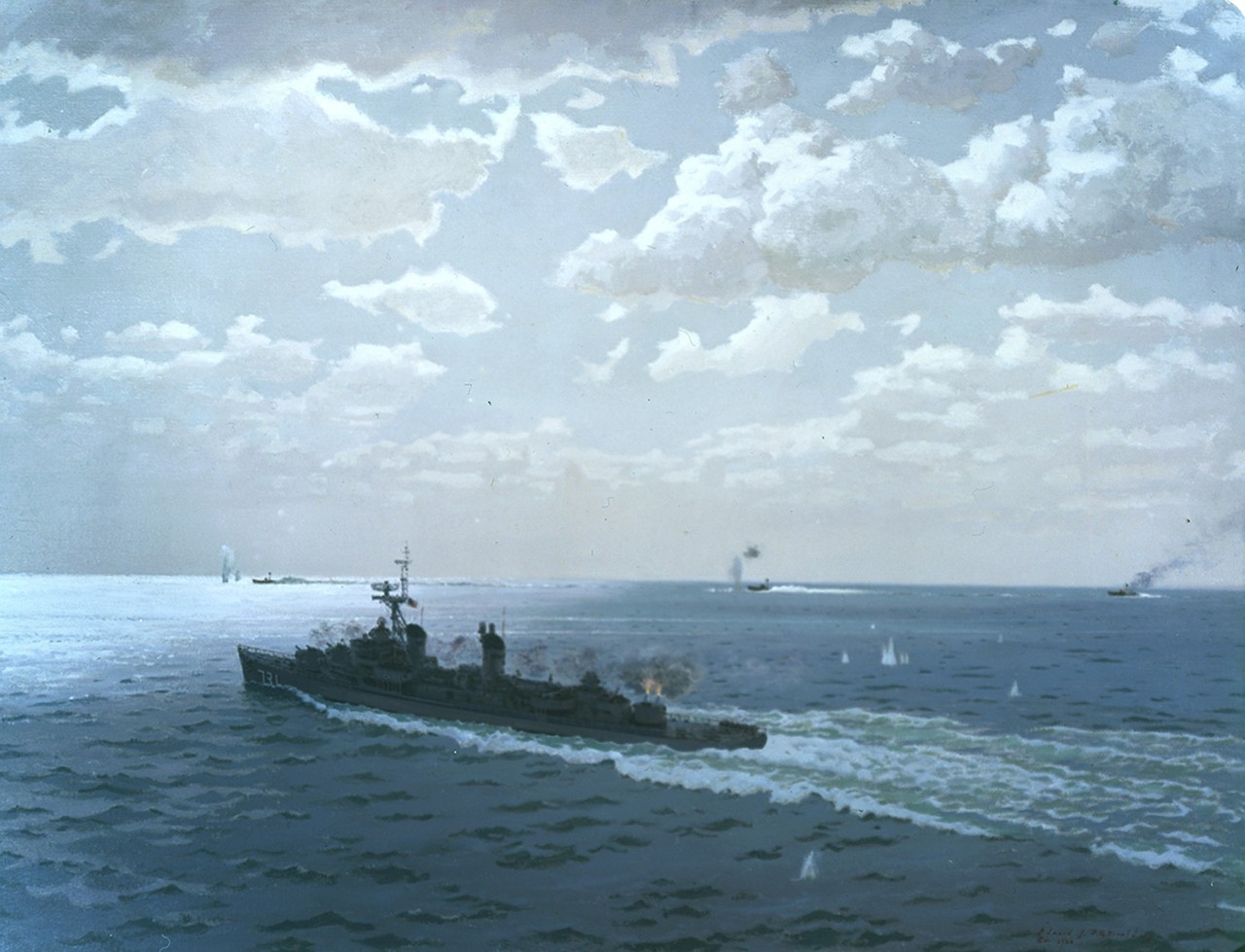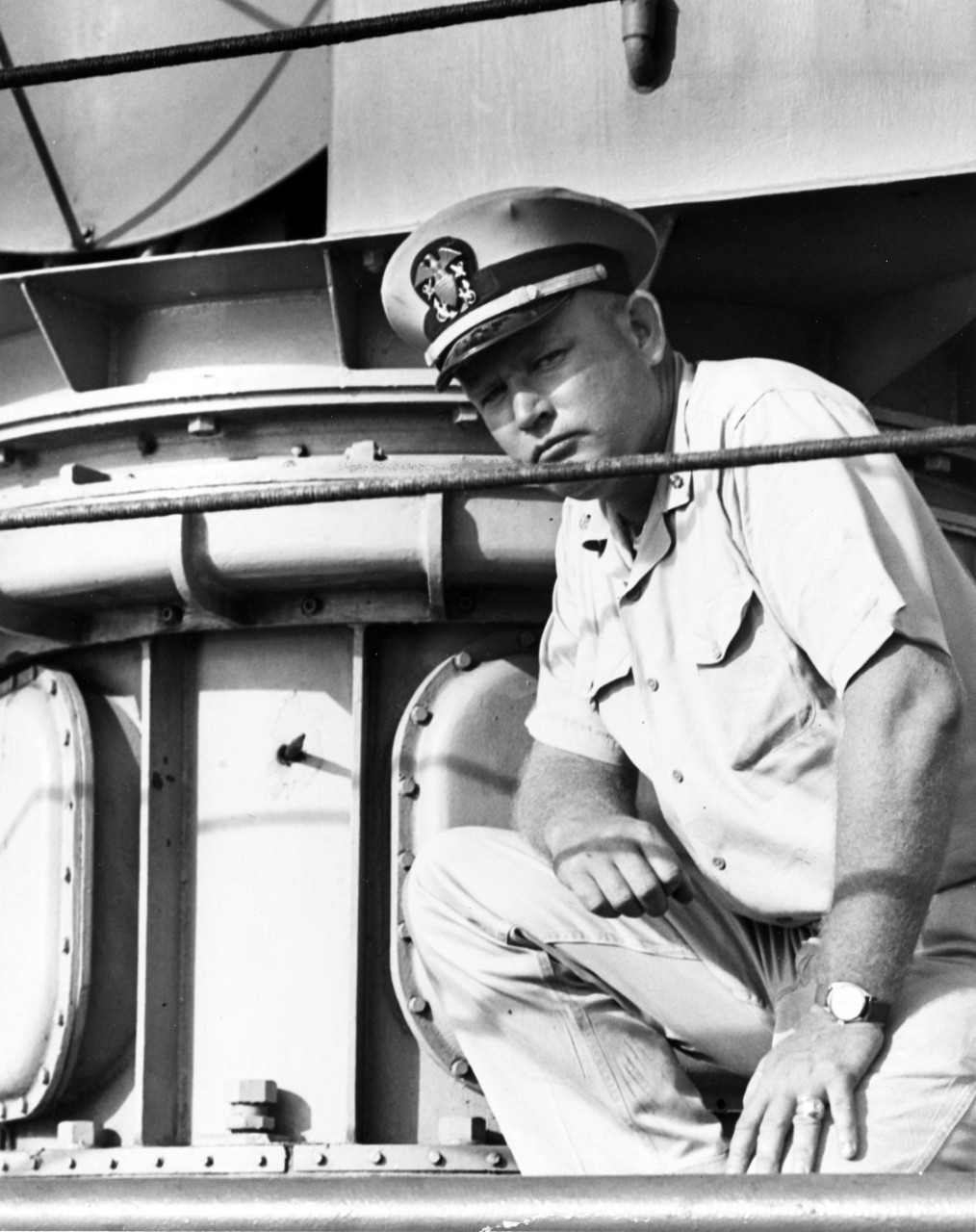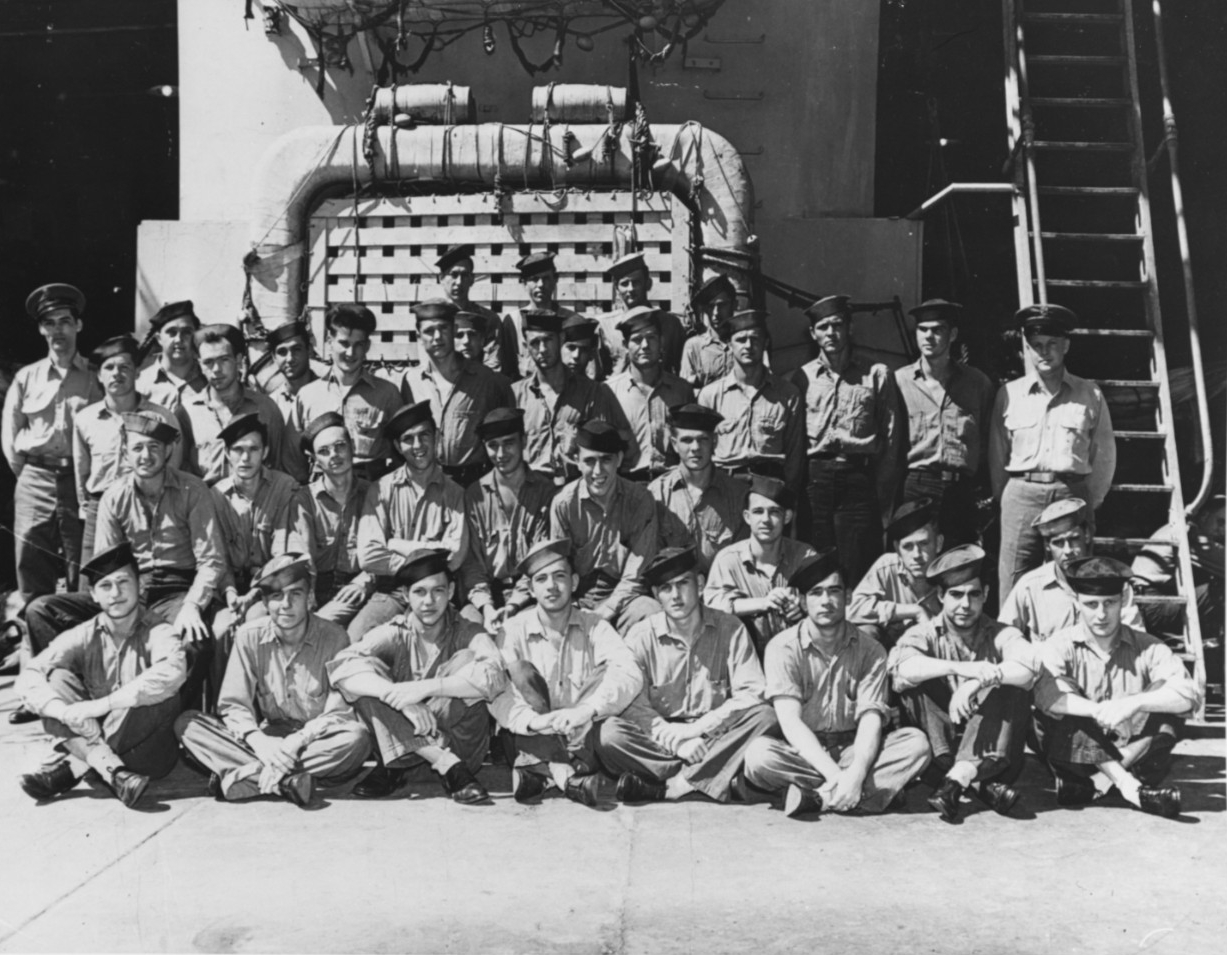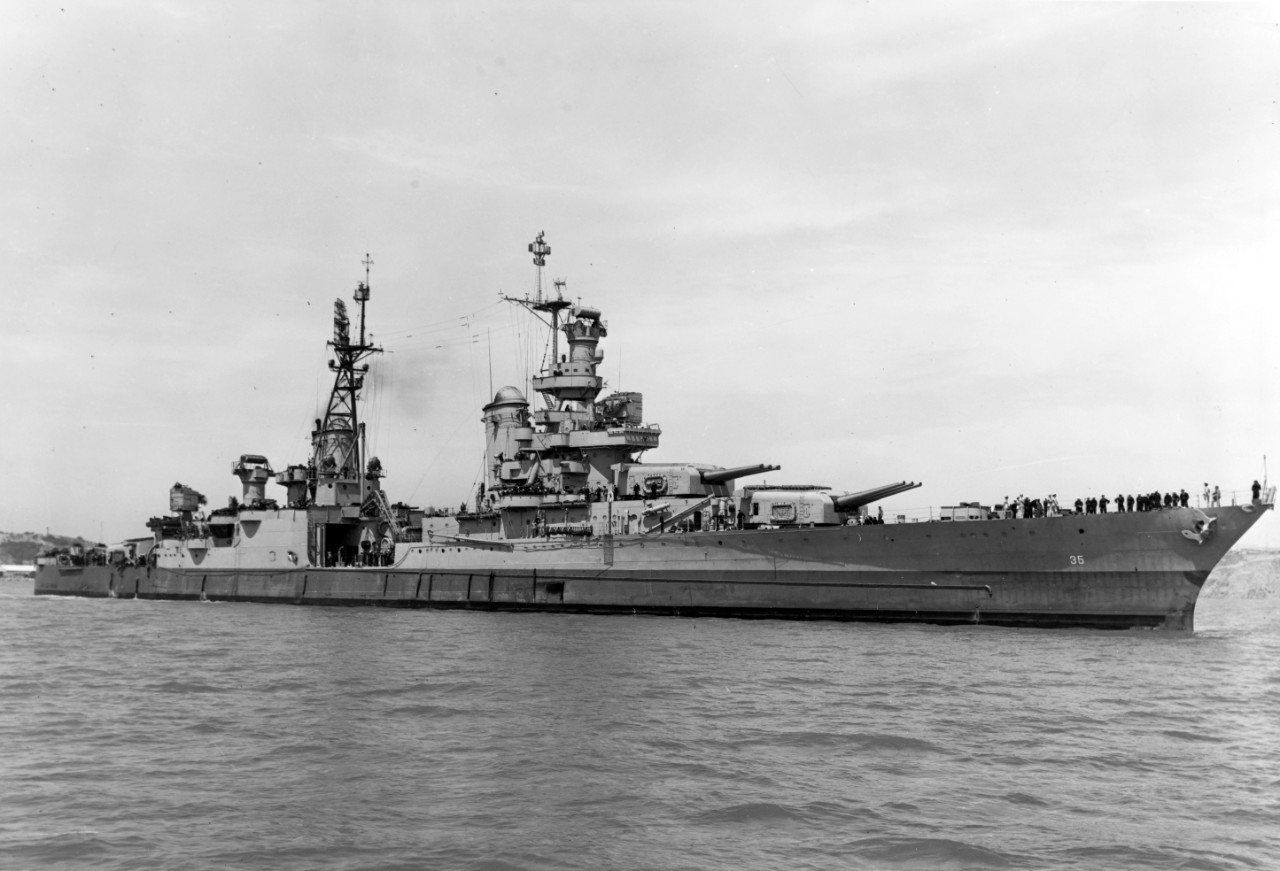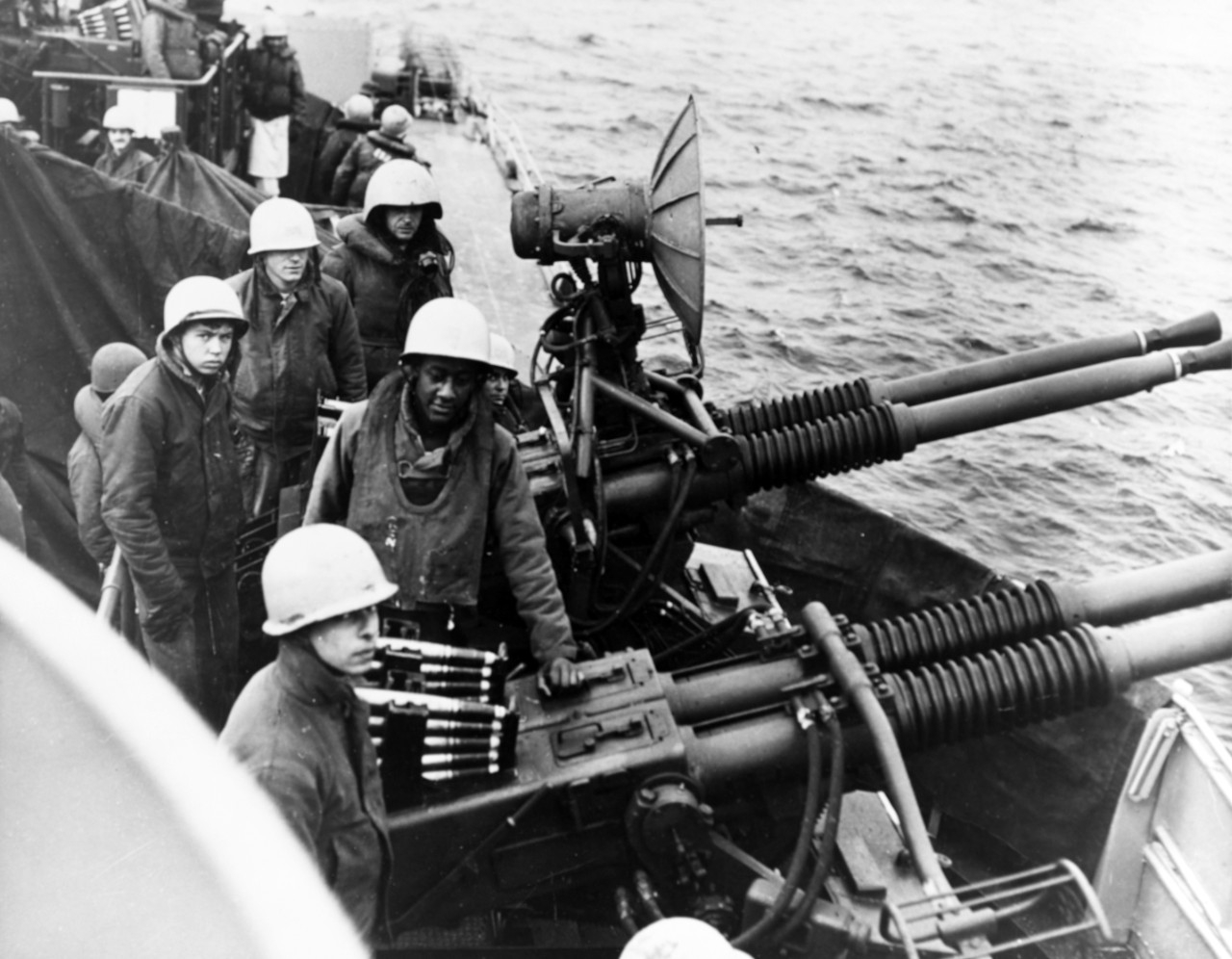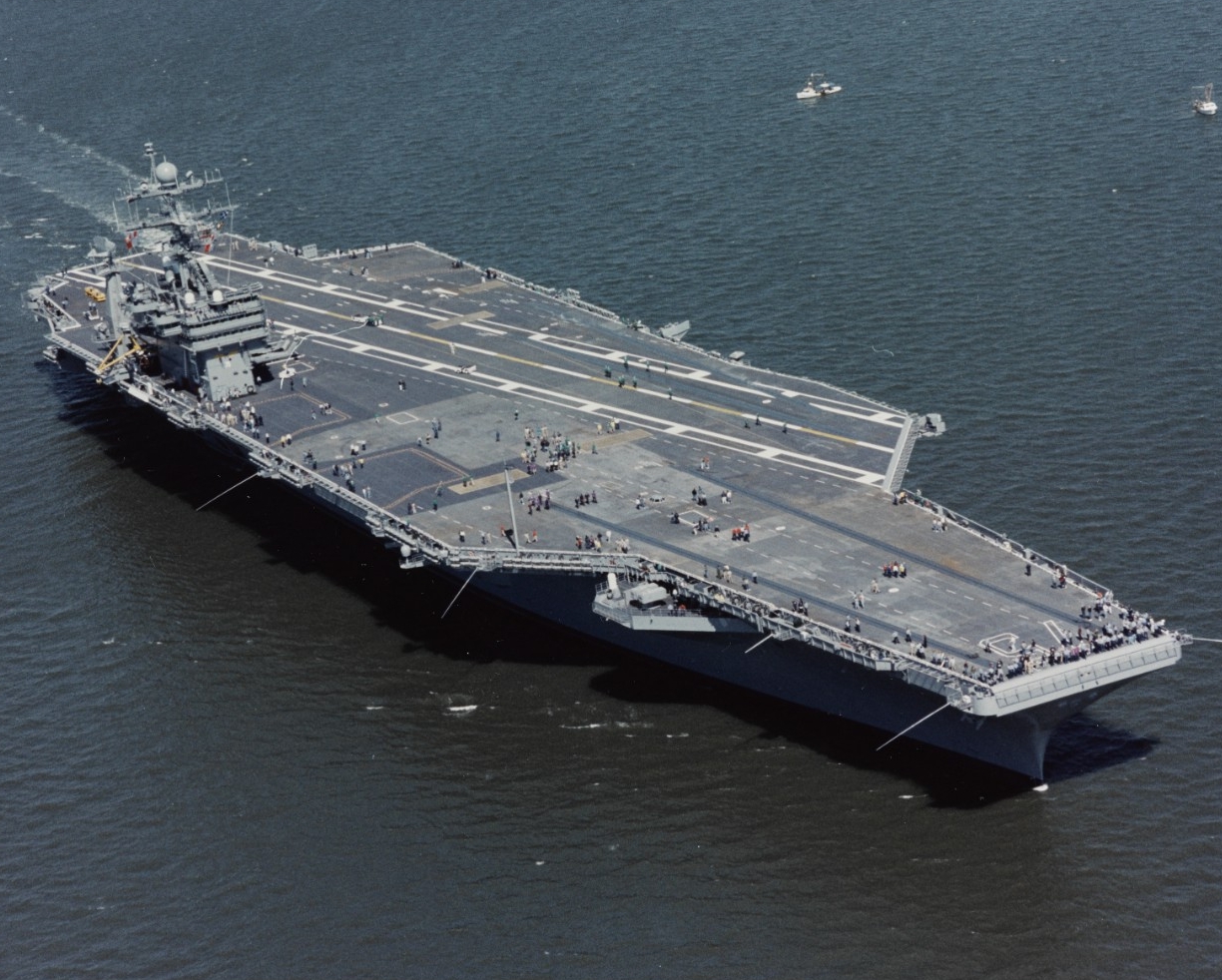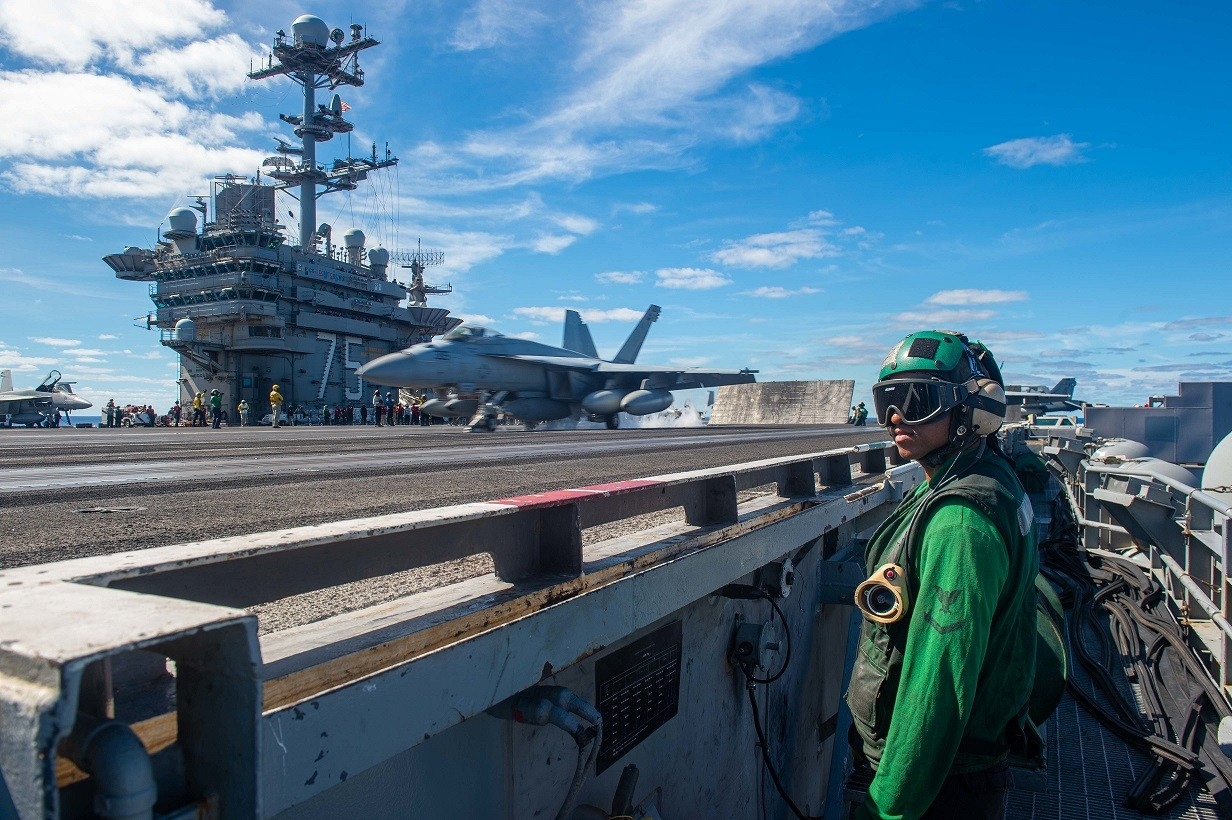Compiled by Brent A. Hunt, Naval History and Heritage Command’s Communication and Outreach Division
Gulf of Tonkin Incident
On July 31, 1964, USS Maddox (DD-731) was on the first leg of a DESOTO patrol, intended to collect North Vietnamese signals intelligence in the Tonkin Gulf in the South China Sea. Initially, the patrol was routine; however, it would soon prove to have global repercussions. On Aug. 2, Maddox, while cruising in international waters, was attacked by three North Vietnamese motor torpedo boats. During the engagement, the American destroyer put two of the boats out of action with direct hits. No American crewmembers were killed or injured during the attack, and the ship did not sustain serious damage (a single 14.5-millimeter machine gun hit). At first, the North Vietnamese attack was assumed to be in error, but within 48 hours, it was assessed as deliberate. On the stormy night of Aug. 4, it appeared that North Vietnamese patrol boats again launched an attack on Maddox, but this time the ship was accompanied by destroyer USS Turner Joy (DD-951). With fresh intelligence on North Vietnamese intent, crews on the American ships were more prepared for an attack. Early detection of “radar blips” provoked the destroyers to fire at what they believed to be enemy vessels. Maddox began firing star shells for illumination while Turner Joy opened fire on the perceived attackers. USS Ticonderoga (CV-14) provided requested naval air support. More recent analysis of that data and additional information gathered on the Aug. 4 incident now make it clear that North Vietnamese naval forces did not attack Maddox and Turner Joy that night.
In response to the actual attack of Aug. 2 and the suspected attack of Aug. 4, President Lyndon B. Johnson ordered Seventh Fleet carrier forces to launch retaliatory strikes against North Vietnam. On Aug. 5, aircraft from carriers Ticonderoga and USS Constellation (CVA-64) destroyed an oil storage facility at Vinh and damaged or sank about 30 enemy naval vessels in port or along the coast. Of greater significance, on Aug. 7, Congress overwhelmingly passed the Tonkin Gulf Resolution, which enabled Johnson to employ military force as he saw fit against the Vietnamese communists. In the first months of 1965, President Johnson ordered the deployment to South Vietnam major U.S. ground, air, and naval forces. Thus began a new phase of the Vietnam War.
The immediate result of the Gulf of Tonkin incident marked a significant turning point in the Cold War struggle for Southeast Asia. American leaders decided to put military pressure on Ho Chi Minh’s North Vietnamese government in Hanoi, which directed and provided military support for the Viet Cong, the communist insurgents in the south. President Johnson, Secretary of Defense Robert McNamara, and their advisors believed that naval forces could be used to help compel Ho Chi Minh to cease his support for the Viet Cong. The U.S. Navy had previously armed the South Vietnamese navy with Norwegian-built fast patrol boats, trained Vietnamese crews, and maintained the vessels at Danang in northern South Vietnam. However, many of the early missions failed due to lack of accurate intelligence on the enemy’s key military installations, defensive forces, and operating methods. Consequently, Washington ordered the Navy to focus more attention on the coast of North Vietnam in its longstanding patrol operations.
Indianapolis Lost
In the early morning of July 30, 1945, after delivering top secret atomic bomb components at Tinian, Japanese submarine I-58 torpedoed and sank USS Indianapolis (CA-35), northeast of Leyte. It sank in a mere 12 minutes. When the ship did not reach Leyte on July 31 as scheduled, no report was made that it was overdue. The omission was due to a misunderstanding of the movement report system. Thus, it was not until 10:25 a.m. on Aug. 2 that the ship’s survivors were sighted by a patrol aircraft. They were mostly staying afloat with life jackets, although there were a few rafts that had been cut loose and launched before the ship went down. The survivors were sighted by a plane on a routine patrol. The pilot immediately dropped a life raft and a radio transmitter. All air and surface units capable of rescue operations were dispatched to the scene at once, and the surrounding waters were thoroughly searched for survivors. Upon completion of rescue operations on Aug. 8, a radius of 100 miles had been combed over by day and by night. Only 316 of the cruiser’s 1,199 crewmembers survived. Most of the Indianapolis Sailors died from either drowning, dehydration, exposure, or shark attacks. The first of two atomic bombs were dropped on Japan a few days later, ending World War II.
Commissioned at the Philadelphia Navy Yard on Nov. 15, 1932, Indianapolis, a Portland-class cruiser, earned 10 battle stars for its service during the war. Notable battles included campaigns in the Aleutians, Gilbert Islands, Marshall Islands, New Guinea, Saipan, Philippine Sea, Tinian, Peleliu, Iwo Jima, and Okinawa.
On Aug. 18, 2017, the late Paul G. Allen’s research vessel Petrel located wreckage from Indianapolis some 5,500 meters below the surface, resting on the floor of the North Pacific. “To be able to honor the brave men of USS Indianapolis and their families through the discovery of a ship that played such a significant role in ending World War II is truly humbling,” said Allen. “As Americans, we all owe a debt of gratitude to the crew for their courage, persistence, and sacrifice in the face of horrendous circumstances.”
NHHC Director Sam Cox also commented on the discovery of Indianapolis. “Even in the worst defeats and disasters there is valor and sacrifice that deserves to never be forgotten. They can serve as inspiration to current and future Sailors enduring situations of mortal peril. There are also lessons learned, and in the case of Indianapolis, lessons re-learned, that need to be preserved and passed on, so the same mistakes can be prevented, and lives saved.”
For more, NHHC has a comprehensive Indianapolis webpage that provides research into the loss, additional suggested reading, imagery, coverage of the sinking’s aftermath, and remembrance. Check it out today.
Truman’s Executive Order @75
For 75 years, the U.S. military have implemented personnel policies that favor equality “without regard to race, color, religion, or national origin.” On July 26, 1948, President Harry S. Truman signed Executive Order 9981—“Establishing the President’s Committee on Equality of the Treatment and Opportunity in the Armed Services.” At the time President Truman signed the executive order, the U.S. Navy was already in the process of establishing policies for racial integration. After making the decision to consolidate the armed forces under the Department of Defense, uniform personnel policies and instructions were a necessity, including racial integration. Therefore, Truman’s executive order established a committee “to examine the rules, procedures, and practices of the armed services in order to determine in what respect they might be altered or improved with a view toward carrying out the policy of the order.” One of Truman’s senior advisors, Charles Fahy, was selected to lead the committee. Also named to the committee were National Urban League Executive Director Lester B. Granger (who had also worked with Secretary of the Navy James Forrestal to begin efforts to integrate the Navy), Oberlin College President William E. Stevenson, National Urban League member Dwight R.G. Palmer, and Chicago Defender publisher John H. Sengstacke. After multiple hearings, the committee made the conjecture that the armed services had operated under two assumptions: “(1) Negroes do not have the education and skills to perform efficiently in the more technical military occupations, and (2) Negroes must be utilized, with few exceptions, in segregated units.” The departments of the U.S. military also acknowledged that African Americans were essentially used as additional basic manpower.
During World War II, more than one million African Americans had served in the armed services, including almost 200,000 in the Navy. At the time of the committee’s recommendations, the Navy noted that African Americans were already “serving in every job classification in general service.” The Navy’s technical schools were also open to personnel who were qualified “without racial quotas.” In just five years, the Navy had moved from a policy of complete exclusion to complete integration. The policy change was motivated by military efficiency and moral considerations.
The committee leveraged the military efficiency argument and contended that the new complexities of war warranted a greater infusion of skilled service members. In particular, the nuclear Navy could not afford for its Sailors to be trained inadequately. Maximum military efficiency required that every member of the armed forces be able to exploit their talents, and the committee reasoned an inseparable link therefore existed between military efficiency and equal opportunity. For more on Truman’s Executive Order 9981: Advancing Military Policy Ahead of American Attitudes, read the blog by NHHC Historian Dr. Heather M. Haley at The Sextant. For more on the African American experience in the U.S. Navy, visit NHHC’s website.
Today in Naval History—Harry S. Truman Turns 25
On July 25, 1998, USS Harry S. Truman (CVN-75) was commissioned at Naval Station Norfolk, Virginia. The eighth aircraft carrier of the Nimitz class was the first to be named after the 33rd president of the United States. On the ship’s maiden voyage, Harry S. Truman deployed to the Mediterranean, Red Sea, Gulf of Aden, Indian Ocean, Arabian Sea, and Arabian Gulf. During the underway, the ship participated in Operation Southern Watch, during which it enforced UN sanctions on Iraq. The carrier’s deployment was highlighted by a strike on an Iraqi radar system with precision-guided munitions and the seizure of smuggled Iraqi oil worth $460,000. After nearly 180 days and traveling more than 44,000 nautical miles, the ship completed its first deployment in May 2001.
After arriving back at its homeport of Naval Station Norfolk, Harry S. Truman underwent its first planned incremental availability (PIA). Six months later, the ship began training for its second deployment. In early February 2003, Harry S. Truman took up station in the eastern Mediterranean and waited for word to launch strikes against Saddam Hussein’s regime in Iraq. When the order came on March 19, 2003, Operation Iraqi Freedom commenced. During the deployment, the ship’s crew successfully launched 1,280 sorties, dropped more than 700 tons of ordnance, and helped defeat Saddam Hussein’s regime. In 2007, the ship returned to support combat operations in Iraq. During that seven-month deployment, Harry S. Truman launched 2,459 combat sorties.
In May 2010, Harry S. Truman was on the move again. During the seven-month deployment, it traveled more than 50,000 nautical miles and flew more than 10,000 sorties in support of Operation Enduring Freedom and Operation Iraqi Freedom’s follow-on operation New Dawn. After undergoing an extensive dry docking, the ship deployed again in 2013 in support of operations in Afghanistan. During the nine-month deployment, the ship traveled nearly 50,000 nautical miles and flew more than 9,000 sorties. In November 2015, the ship was underway in support of Operation Inherent Resolve. During that eight-month deployment, Harry S. Truman traveled more than 53,000 nautical miles, and flew more than 27,000 flight hours in 9,500 sorties.
Since its last deployment in support of combat operations, Harry S. Truman has participated in multiple PIAs and a variety of missions, including forward naval presence, maritime security operations, and theater security cooperation. It has also participated in numerous bilateral and multilateral engagements. Harry S. Truman has won 10 Battle “E” awards: 2003, 2004, 2005, 2008, 2009, 2010, 2013, 2016, 2018, and 2020. The Battenberg Cup designates the “best ship in the fleet” and was awarded to Harry S. Truman in 2003 and 2020.

